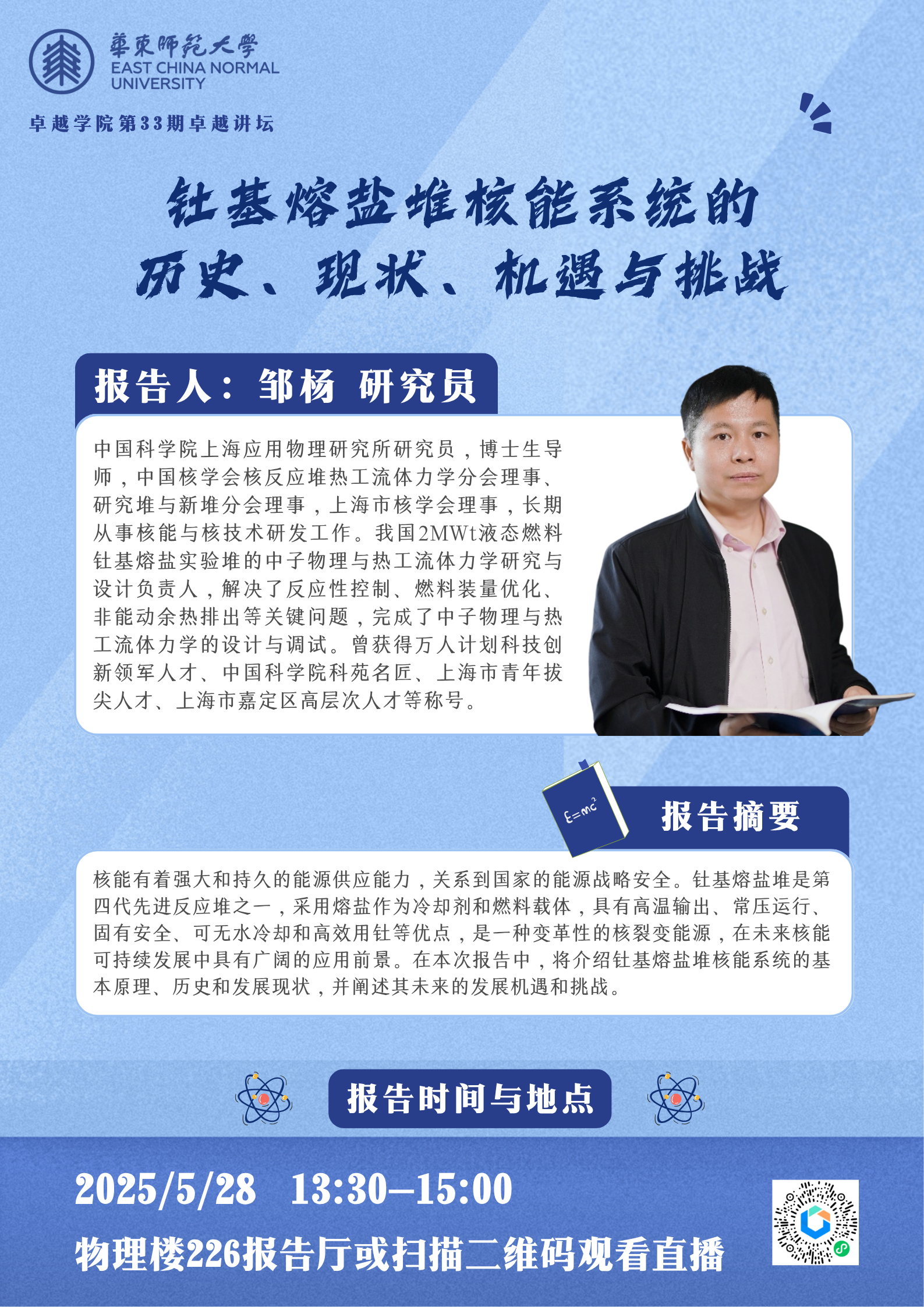报告人:邹杨 研究员
时间:5月28日(星期三)13:30-15:00
地点:闵行校区物理楼226报告厅/线上直播

报告人简介:
邹杨,中国科学院上海应用物理研究所研究员,博士生导师,中国核学会核反应堆热工流体力学分会理事、研究堆与新堆分会理事,上海市核学会理事,长期从事核能与核技术研发工作。我国2MWt液态燃料钍基熔盐实验堆的中子物理与热工流体力学研究与设计负责人,解决了反应性控制、燃料装量优化、非能动余热排出等关键问题,完成了中子物理与热工流体力学的设计与调试。曾入选国家高层次人才计划,获得中国科学院科苑名匠、上海市青年拔尖人才、上海市嘉定区高层次人才等称号。
报告题目:
钍基熔盐堆核能系统的历史、现状、机遇与挑战
The History, Current Situation, Opportunities and Challenges of the Thorium Molten Salt Reactor Nuclear Energy System
报告简介:
核能有着强大和持久的能源供应能力,关系到国家的能源战略安全。钍基熔盐堆是第四代先进反应堆之一,采用熔盐作为冷却剂和燃料载体,具有高温输出、常压运行、固有安全、可无水冷却和高效用钍等优点,是一种变革性的核裂变能源,在未来核能可持续发展中具有广阔的应用前景。在本次报告中,将介绍钍基熔盐堆核能系统的基本原理、历史和发展现状,并阐述其未来的发展机遇和挑战。
Nuclear energy has the capability of providing a robust and sustainable energy supply, which is crucial to a country's energy strategic security. The thorium molten salt reactor (TMSR) is one of the Generation-IV advanced reactors. It uses molten salt as both the coolant and the fuel carrier, and possesses advantages such as high-temperature output, normal-pressure operation, inherent safety, the ability to operate without water cooling, and efficient utilization of thorium. It is a transformative nuclear fission energy source and holds broad application prospects in the sustainable development of nuclear energy in the future. During this presentation, the fundamental principles, history, and current development status of the TMSR energy system will be introduced, and its future development opportunities and challenges will be expounded.
观看方式:拔尖计划2.0全国线上书院直播

